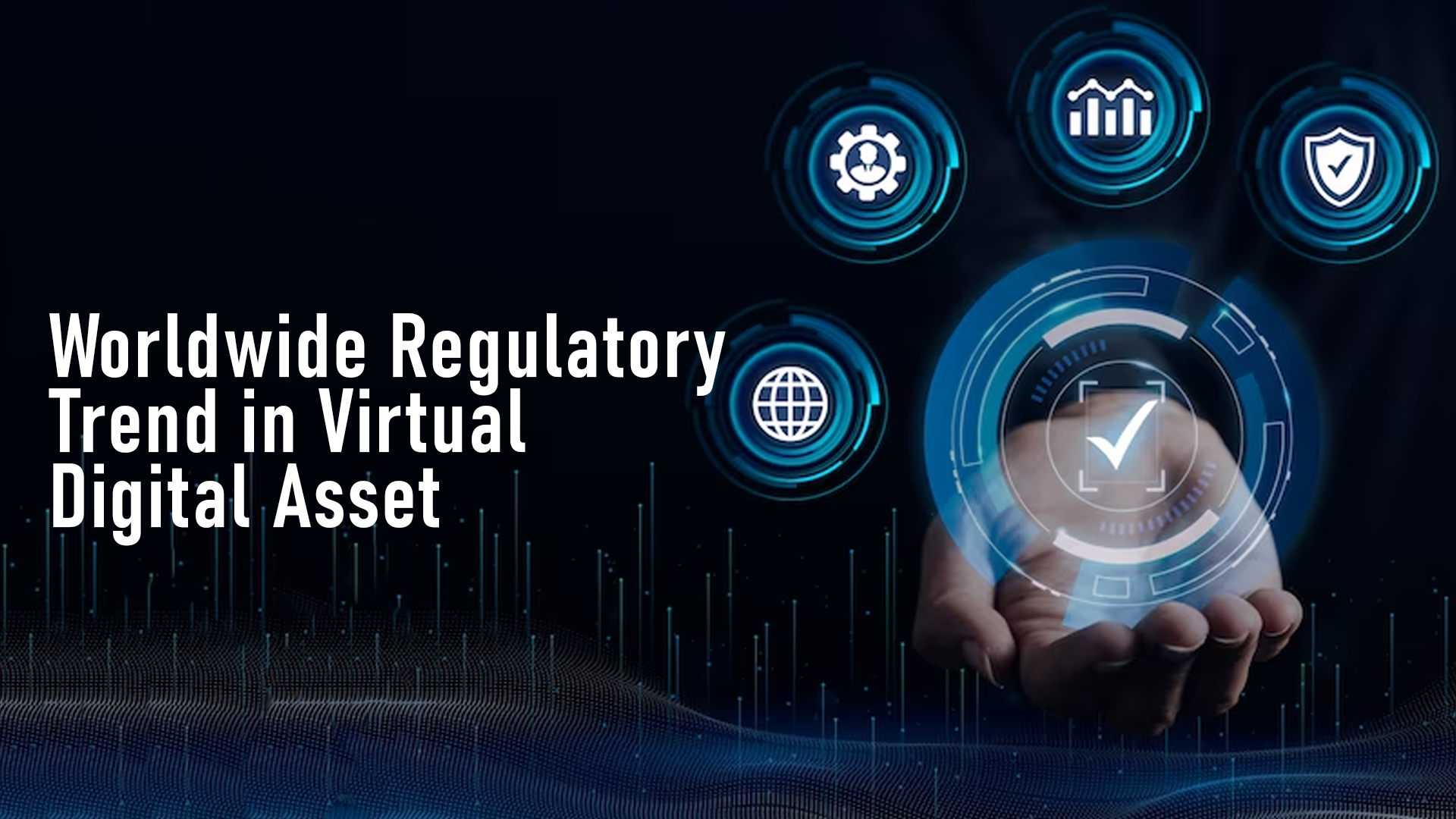Learning from Worldwide Regulatory Trend in Virtual Digital Assets


- Virtual Digital Assets (VDAs) encompass cryptocurrencies and digital tokens, redefining financial landscapes globally.
- VDA regulations differ worldwide, from strict controls in China to progressive approaches in the EU.
- Understanding regulatory trends highlights the need for a balanced, adaptable approach to VDA oversight.
Virtual Digital Assets (VDAs), including cryptocurrencies and digital tokens, have surged in popularity, sparking both enthusiasm and regulatory scrutiny worldwide. In this article, we will explore the dynamic realm of VDA regulation, highlighting global trends and the valuable lessons that can be drawn from the evolving landscape.
Introduction to Virtual Digital Assets (VDAs)
Virtual Digital Assets (VDAs) comprise a broad spectrum of digital tokens and cryptocurrencies that leverage blockchain technology for various purposes. These purposes extend from facilitating peer-to-peer transactions to supporting the functioning of decentralized applications (DApps). This category encompasses widely recognized cryptocurrencies such as Bitcoin and Ethereum, along with a multitude of alternative digital currencies. With the increasing prominence of VDAs, governments and regulatory bodies worldwide have been grappling with the categorization and oversight of these digital assets.
The Varied Landscape of VDA Regulation Worldwide
The regulatory landscape for VDAs varies significantly from one country to another. Some nations have embraced VDAs, fostering innovation and growth, while others have taken a more cautious or even prohibitive stance.
Countries like Switzerland, Malta, and Singapore have established themselves as crypto-friendly hubs, creating comprehensive frameworks to attract blockchain startups and foster a conducive environment for VDA development. Conversely, countries like China have imposed stringent prohibitions on specific virtual digital assets (VDAs), whereas the United States is navigating a complex web of regulations that differ between states and at the federal level.
Additionally, the European Union has stepped into the arena with its proposal known as Markets in Crypto-Assets (MiCA), which seeks to create a consistent framework for VDAs across its member nations. Meanwhile, nations in Africa and Southeast Asia are exploring how VDAs can drive financial inclusion and economic growth.
Key Takeaways and Lessons Learned
From the diverse approaches to VDA regulation globally, several key lessons emerge. Firstly, the importance of regulatory clarity cannot be overstated. Uncertainty hampers innovation and investment, driving businesses to seek jurisdictions with more transparent rules. Second, collaboration between governments, industry players, and experts is essential to crafting effective regulations that balance innovation with consumer protection and security.
Another crucial lesson is the need for adaptability. The VDA space evolves rapidly, with new technologies and assets emerging regularly. Regulatory frameworks must be flexible enough to accommodate these changes while still ensuring compliance and security.
The Path Forward: Balancing Innovation and Regulation
As VDAs continue to reshape finance and technology, the path forward involves striking a delicate balance between fostering innovation and safeguarding against risks. Regulation should aim to protect investors and consumers while promoting responsible development and usage of VDAs.
International cooperation is becoming increasingly important as VDAs transcend borders. Harmonizing regulations across countries can reduce regulatory arbitrage and provide more comprehensive protection for global users of VDAs.
Furthermore, governments should engage with the VDA industry and blockchain communities to gain insights into the technology’s potential and risks. This collaborative approach can lead to more informed and effective regulations.
Conclusion
In conclusion, the regulation of Virtual Digital Assets represents a complex and evolving challenge for governments worldwide. By examining global trends and drawing valuable lessons from varied regulatory approaches, we can move toward a future where VDAs are harnessed for their full potential while mitigating associated risks. Striking the right balance between innovation and regulation will be instrumental in shaping the future of VDAs on a global scale.
Recent Posts
PEPE Coin Leads SHIB in Weekly Gains; While New Exchange Token Surges 350% Surpassing Both
The meme coin market has been led strongly by high optimism as many enthusiasts are anticipating the…
Unlock the Power of Passive Income: The Top 4 Crypto Staking Platforms of 2025
Crypto staking is revolutionizing the way investors earn passive income in the digital asset space.…
Start a Bitcoin Mining Machine Using Dogecoin (DOGE) – CrytocoinMiner
As times have changed, so have people’s attitudes towards energy. They rely on renewable energy…
$2 Million! Remittix Raises Record Amounts In Under Three Weeks! Why Are Savvy Investors Excited About This New Altcoin
The markets are red hot, with Bitcoin breaking the 100k mark again on Monday. But…
Remittix (RTX) Races Past $1M During Presale, Traders Forecast $1 Price Target In 2025
Crypto presale investment opportunities offer the biggest possible gains. Ask anybody who bought into Solana at…
Bety Player Hits Jackpot In Crypto-Gaming Superslam!
A Bety.com user recently won millions of dollars playing the platform’s Hash Lucky game with…


